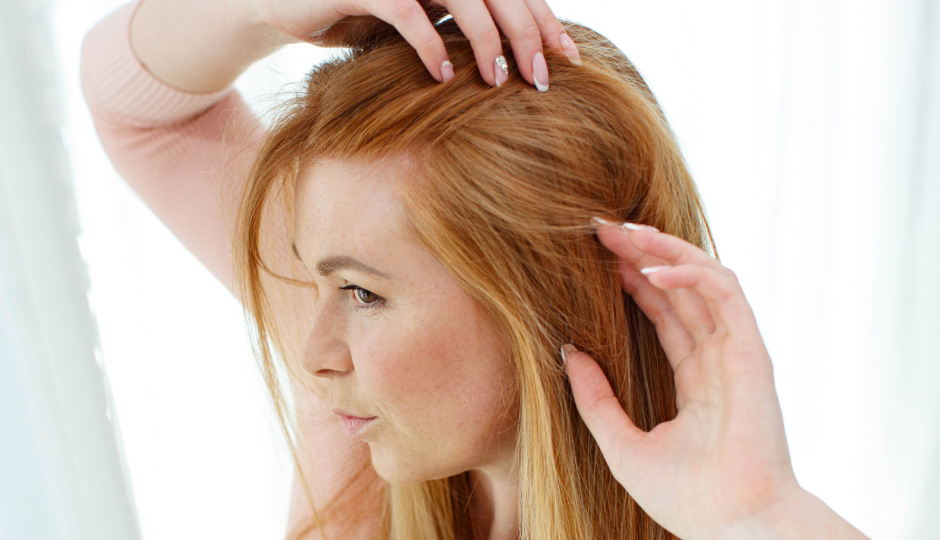When men lose their hair, it comes as more of an expectation than a shock. Though guys who start thinning very early might be disappointed, their hair loss will generally be socially accepted. For women, hair loss is completely different. Even minor or temporary thinning can have a big impact on a woman's quality of life. At Elite Hair Loss Solutions, we understand that the experience of hair loss is deeply personal. You can trust our intimate studio to be the only resource you ever need for restoring and maintaining your hair.
Why Do Women Lose Their Hair?
Unlike men, most women are not genetically predisposed to lose their hair. Though androgenetic alopecia occurs in women and is called female pattern hair loss, a far lower percentage of women than men inherit this condition. Women can start thinning or shedding hair for a wide array of reasons, some of which are harmless and, others that can indicate underlying and potentially more severe medical issues.
Hair’s Natural Growth Cycle
The natural growth cycle of your hair occurs in 3 phases. Whether your hair loss it tied to genetics or not, problems arise when this natural growth cycle is thrown off balance—either because the growth stage is made unproductive or the rest stage is prolonged. Let’s take a closer look at the natural phases.
PHASE 1 - Anagen (Growing Phase)
Hair is actively growing when it’s in the anagen phase. A follicle produces a new hair, pushing the old "club" hairs out. That results in normal shedding, which is about 100 strands of hair a day. Each new hair should stay in this phase for two to six years.
PHASE 2 - Catagen (Transition Phase)
The catagen phase is a transition stage lasting just two or three weeks. During this phase, the root pulls away from the follicle and attaches to the root of the hair – resulting in a non-growing “club” hair. About 3% of your hair should be in this catagen phase at any one time.
PHASE 3 - Telogen (Resting Phase)
Telogen hairs are club hairs that are finished growing, and they simply stay in place until they’re shed. Telogen hairs should make up less than 8% of the hairs on your head. If we see more than 8%, we can likely conclude that there's a problem on the follicular level. Too many hairs in the telogen phase indicate that your hair-growth cycle is out of balance.
Identifying the Cause of Hair Loss is Key
Since we don't expect to lose our hair, the shock can cause women to stay quiet and try to hide our thinning. It's a natural reaction to hope what you're seeing is just a temporary thing. Elite Hair Loss Solutions is here to tell you that it's important to fight that natural reaction. Like most body-related issues, early detection is key when it comes to women's hair loss. For several reasons, getting help early is the best possible outcome.
Women's hair loss is a symptom, not a diagnosis. When women lose their hair, there's usually something else going on. These are the most common causes of hair loss in women:
- Female Pattern Baldness
It takes on a different pattern, but androgenetic alopecia affects women too. This genetic condition causes a harmful hormone called DHT to bind to hair follicles and stifle hair growth. If it's left untreated, hair will miniaturize and follicles can die. Since we're born with all the hair follicles we'll ever have, female pattern baldness is progressive. - Telogen Effluvium
In this condition, hair begins to go into the resting phase of the growth cycle prematurely. Strands of hair fail to grow to their full potential, resulting in fine, wispy hairs and areas of thinning. Telogen Effluvium can be caused by a variety of factors, including physical stress, trauma, pregnancy, rapid weight gain or loss, prescriptions or medical treatments, and hormone changes. When the cause of this type of hair loss is remedied, hair loss can be reversed and normal growth restored. - Trichotillomania
Some women's hair loss is caused by external factors, such as chronic hair pulling. Sometimes without even being conscious of it, women can twirl and tear out their hair to a severe degree. Since trichotillomania is a behavioral cause of hair loss, its effects can be reversed if the hair pulling is stopped. - Health Conditions
Arguably the most important reason to address hair loss early is to determine whether it's being caused by an underlying health condition. Nutrient deficiencies, thyroid disorders, and some chronic diseases are accompanied by hair loss as a symptom.
Hair loss is hard enough to go through. Don't prolong the stress of finding out what's going on. If it is genetic and you do have androgenetic alopecia, then you'll be a great candidate for a variety of DHT-blocking and hair loss prevention solutions. The earlier you intervene in your hair loss, the bigger impact you'll have.
Find Out Today!
To find out exactly what's causing your hair to thin or shed, contact Elite Hair Loss Solutions in Sacramento, CA. You'll get honest answers, compassionate attention, complete privacy, and genuine options. Contact us today to schedule your FREE complimentary consultation with a women's hair loss specialist.







